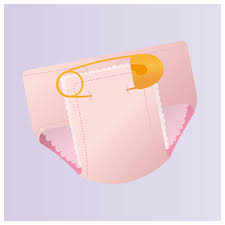Worries about changing the baby's diaper at the right time may soon become a thing of the past for many parents as Indian-origin researchers at Massachusetts Institute of Technology have developed a "smart" version of the product that can alert a caregiver when it is wet.
This smart diaper is embedded with a moisture sensor that detects dampness and sends a signal to a nearby receiver, which in turn can send a notification to a smartphone or computer, according to a study published in the journal IEEE Sensors. The sensor could also be integrated into adult diapers, for patients who might be unaware or too embarrassed to report themselves that a change is needed, according to Pankhuri Sen, a research assistant in MIT's AutoID Laboratory.
"Diapers are used not just for babies, but for ageing populations, or patients who are bedridden and unable to take care of themselves," Sen said. "It would be convenient in these cases for a caregiver to be notified that a patient, particularly in a multibed hospital, needs changing," she added. If worn too long, a wet diaper can cause painful rashes.
Sensor in the diaper consists of a RFID tag

"This (smart diaper) could prevent rashes and some infections like urinary tract infections, in both ageing and infant populations," added research collaborator Sai Nithin R. Kantareddy, a graduate student in MIT's Department of Mechanical Engineering.
The sensor in the diaper consists of a passive radio frequency identification (RFID) tag, that is placed below a layer of super absorbent polymer, a type of hydrogel that is typically used in diapers to soak up moisture. When the hydrogel is wet, the material expands and becomes slightly conductive -- enough to trigger the RFID tag to send a radio signal to an RFID reader up to one metre away.
The researchers estimate that the sensor costs less than two cents to manufacture, making it a low-cost, disposable alternative to other smart diaper technology. Over time, smart diapers may help record and identify certain health problems, such as signs of constipation or incontinence.
RFID tag and its two elements
A typical RFID tag has two elements: an antenna for backscattering radio frequency signals, and an RFID chip that stores the tag's information, such as the specific product that the tag is affixed to. RFID tags don't require batteries; they receive energy in the form of radio waves emitted by an RFID reader.
When an RFID tag picks up this energy, its antenna activates the RFID chip, which tweaks the radio waves and sends a signal back to the reader, with its information encoded within the waves. This is how, for instance, products labelled with RFID tags can be identified and tracked. The new sensor may be especially useful for nurses working in neonatal units and caring for multiple babies at a time.









